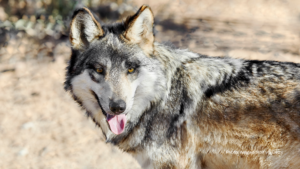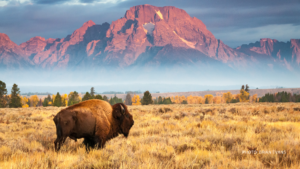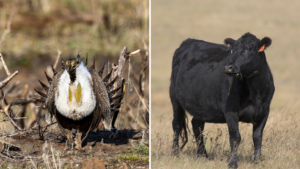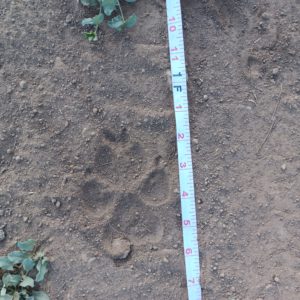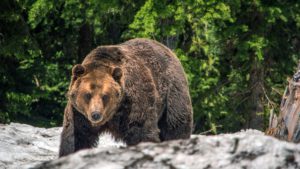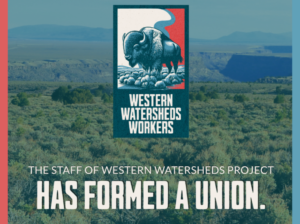For Immediate Release
August 21, 2020
Contacts:
Deborah Moskowitz, Resource Renewal Institute, President, 415-928-3774, debmosk@gmail.com
Chance Cutrano, Resource Renewal Institute, Director of Programs, 415–888-8248, ccutrano@rri.org
Laura Cunningham, California Director, Western Watersheds Project, 775-513-1280, lcunningham@westernwatersheds.org
Jeff Miller, Senior Conservation Advocate, Center for Biological Diversity, (510) 499-9185,j miller@biologicaldiversity.org
POINT REYES STATION, Calif. — Conservationists today raised concerns that drought conditions are once again drying up important watering holes for tule elk fenced in on Tomales Point at Point Reyes National Seashore, while dry lightning storms this week ignited wildfires in the Philip Burton Wilderness, which may impact free-roaming elk herds that inhabit the park’s Limantour area.
With a record heat wave underway, surface water is drying up at Tomales Point, raising concerns for the iconic tule elk. During the 2012-2015 drought, ponds went dry that otherwise provide drinking water for elk fenced in at the Tomales Elk Reserve. An elk die-off was reported in the Point Reyes Light in March of 2014 and 2015 based on National Park Service (NPS) counts that were made available.[1]
This week, visitors to the Elk Preserve notified the NPS that a critical pond had gone completely dry. Other ponds in the Elk Preserve have since dried up, which is unusual for this coastal area in most years, echoing the situation during the 2014-2015 extreme drought.
“If you’re going to hold them captive, then you have an obligation to keep them alive,” observed James Coda, a retired NPS attorney and Point Reyes photographer who documented the lack of water in the elk reserve, while cattle on the other side of the fence wade in flowing creeks.
In response to the earlier elk die-off, and the NPS prioritizing cattle ranching at the Seashore over wildlife and visitors, environmentalists sued over the Seashore’s nearly 40-year-old general management plan and lack of any environmental impact analysis for ranching. A settlement agreement among the plaintiffs—Resource Renewal Institute, Western Watershed Project, Center for Biological Diversity—and the Park Service and Seashore ranchers in 2017 committed the NPS to produce its first-ever environmental review of ranching at the Seashore.
The problem of insufficient water at the Tomales Elk Reserve was anticipated in the Seashore’s 1998 Tule Elk Management Plan/Environmental Assessment, which noted there are no year-round streams in the 2,000-acre enclosure where the elk herd is held.
The fenced-in elk survive on limited water, in the form of old cattle ponds, seeps and condensation from fog. In the 1998 elk plan, the NPS rejected the idea of creating additional water impoundments (see p.12.). The NPS claimed the elk population crash was a normal adaption to available resources, but after public outcry, pledged to truck in supplemental waterwhen the ponds go dry. Evidently, no supplemental water has as yet been provided this year. In contrast the free-roaming elk herds at Drakes beach and Limantour in the Seashore increased their population numbers during the same drought period, since those elk were able to roam to find water and forage.
On August 17 dry lightning storms ignited a wildfire in the Seashore east of Limantour, the Woodward Fire, which is still burning across 1,100 acres as of August 19 with zero containment. The fire is blowing towards Bolinas.
“No one knows yet how the wildfire is impacting the free-roaming tule elk in the Seashore, which are already restricted in their range due to fencing and cattle ranches occupying former elk habitat on a third of the National Seashore,” said Laura Cunningham, California Director at Western Watersheds Project. “With elk already hemmed in by commercial cattle operations, the additional stressors of fire and drought become existential threats to the tule elk population.”
The only National Seashore on the Pacific Coast, Point Reyes, the is one of a handful of National Park units that permit cattle grazing. Over 5,700 beef and dairy cattle graze on 18,000 acres of the park year-round, and cattle outnumber the native elk on Point Reyes by 8 to 1.
NPS management has never allocated any forage at the Seashore for elk. “The Park Service allocates forage to the cattle. The wildlife gets the leftovers,” says Chance Cutrano, director of Special Projects at Resource Renewal Institute.
A stated goal of the 1998 elk plan is to “provide for a free-ranching Tule elk herd….by 2005.” The NPS has aggressively “managed” the elk population to benefit cattle ranching—including preventing the Tomales elk herd access to adequate forage and water during drought years, shooting two dozen elk from the Drakes beach herd, and hazing free-roaming elk off of ranching lease areas in the park. It is this free-roaming herd of about 120 elk that ranchers want removed.
The old elk plan is fairly good, but what the Seashore is planning to replace it with is terrible. NPS should finally, after 22 years of ignoring its own elk management plan, start putting into practice the elk conservation measures that they committed to decades ago.
A draft NPS management plan and Environmental Impact Statement released in 2019 and now being finalized proposes hazing and lethally removing tule elk. Many ranchers preferred Alternative C which proposed to shoot all 120 of the Drakes Beach free-roaming elk herd at once.
The proposed management plan calls for 20-year cattle ranch leases and “diversification” of ranching operations in the park to include raising commercial-levels of sheep, goats, chickens and pigs. Environmentalists fear these additional animals could cause conflicts with native wildlife such as mountain lions, coyotes, badgers, foxes and other park predators, that ranchers would then claim need to be “controlled.”
NPS’ 1998 elk plan adopted an alternative that keeps most of the park’s elk inside the elk reserve’s 8-foot high, woven-wire elk fence, but translocated some elk to the wilderness area of the Seashore. NPS ignored the advice of a Scientific Advisory Panel on Control of Tule Elk to prioritize a large free-ranging elk herd:
The long-range goal of elk management at PRNS should be the reestablishment of free-ranging elk throughout the Seashore and associated public lands. This would involve . . . removal of the fence across Tomales Point. NPS and CDFG should develop a long-range management plan with the goal of achieving a large, healthy, free-ranging elk population subjected to a minimum of management intervention.[2]
“The Park Service should tear down the elk fence at Tomales Point so that all elk in the National Seashore are able to thrive and find adequate water during drought periods,” said Jeff Miller with the Center for Biological Diversity. “Point Reyes is a national park, not a zoo, and native wildlife should not continue to be confined due to the demands of a handful of commercial ranching leaseholders.”
This week, both drought conditions and wildfire are squeezing the elk even more.
###
[1]https://jimcoda.com/2015/03/26/254-elk-die-of-thirst-in-elk-range-point-reyes-national-seashore/
[2]https://www.nps.gov/pore/learn/management/upload/planning_tule_elk_mp_ea_1998.pdf, page 89.

